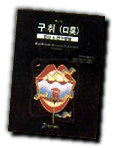
Get our Bad Breath Research Newsletter!



2nd. Edition
Measurement of Bad Breath
Modern day scientists prefer to measure when they can, and to describe what they cannot
measure. To some extent, bad breath defies both measurement and verbal description. The
characteristics of a given smell can be likened to another ("smells like fried
onions"), but smells cannot be described beyond very general terms, such as fragrant,
noxious, etc. The "gold standard" of bad breath measurement remains the human nose. However, whereas there is often a
consensus in social circles about who has bad breath, and who does not, correlations
between odor judges in clinical settings are often moderate at best (Rosenberg et al.,
1991a,b; Rosenberg and McCulloch, 1992). There is some disagreement over the need to train
judges to score bad breath. In the case of known and reproducible odorants, training may
be useful. Similarly, training is important if the judges are to make qualitative
judgements on odor notes (Engen, 1982). However, in the case of bad breath, it is not
clear whether training improves one's ability to score malodor intensity (Rosenberg and
McCulloch, 1992). As part of a laboratory coure in oral microbiology 20 undergraduate
dental students (prior to their clinical training) at Tel Aviv University were recently
asked to rate each other's oral malodor on a 0-5 scale (Rosenberg et al., 1991a;b),
alongside scores given by an odor judge with previous experience (myself). Results are
presented in Table 2 and Figure 1. In
almost all instances (19 of 21), the students' correlations with the mean scores were
significant, and in four cases, exceeded the correlation between the odor judge and class
mean.
remains the human nose. However, whereas there is often a
consensus in social circles about who has bad breath, and who does not, correlations
between odor judges in clinical settings are often moderate at best (Rosenberg et al.,
1991a,b; Rosenberg and McCulloch, 1992). There is some disagreement over the need to train
judges to score bad breath. In the case of known and reproducible odorants, training may
be useful. Similarly, training is important if the judges are to make qualitative
judgements on odor notes (Engen, 1982). However, in the case of bad breath, it is not
clear whether training improves one's ability to score malodor intensity (Rosenberg and
McCulloch, 1992). As part of a laboratory coure in oral microbiology 20 undergraduate
dental students (prior to their clinical training) at Tel Aviv University were recently
asked to rate each other's oral malodor on a 0-5 scale (Rosenberg et al., 1991a;b),
alongside scores given by an odor judge with previous experience (myself). Results are
presented in Table 2 and Figure 1. In
almost all instances (19 of 21), the students' correlations with the mean scores were
significant, and in four cases, exceeded the correlation between the odor judge and class
mean.
During the last century, various attempts have been made to develop instrumental
approaches to measuring bad breath.
These include the osmoscope (Sulser et al., 1939), gas chromatography (Tonzetich, 1977;
Schmidt et al., 1978) and, more recently, the use of portable gas monitors (see Tonzetich,
this volume). Table 1 summarizes recent correlations obtained between odor judges and a
portable sulfide monitor (Interscan Corp., Chatsworth Ca). As can be seen, although the
correlations themselves are significant, the variation in sulfide levels can account for
only some 20 to 40% of the variation in odor judge scores. Correlations comparing  volatile sulfur compounds and oral
malodor, using gas chromatographic measurements, can also be low (Schmidt et al., 1978).
One possible reason for this is that sulfides are not the only gaseous components involved
in malodor. Several studies on bad breath have implicated a range of non- sulfur compounds
(see Goldberg et al., this volume). In 1967, Tonzetich et al. showed that several of these
compounds, i.e., indole, methylamine and cadaverine are not volatilized from the bulk
aqueous phase of saliva. However, as shown by Kleinberg and Codapilly (this volume), when
such compounds are allowed to dry out on the skin, the odours are released, some over long
periods of time. Goldberg et al. (1994) have recently shown that cadaverine levels in
saliva are associated with odor judge scores and improve the correlation obtained with
sulfides alone. Whereas cadaverine measurement may prove an important adjunct measurement
to sulfide monitoring, it is not amenable for use in the dental clinic. In this case, the
BANA assay may prove useful. This simple color test records. the presence of trypsin-like
enzymatic activity associated with several putative periodontopathogenic oral species.
BANA scores are associated with cadaverine levels and can improve the correlation between
sulfide measurements and oral judge scores (De Boever et al., 1994; Goldberg et al., 1994;
Kozlovsky et al., 1994). Future quantitative assessments of oral malodor may include
electronic "noses" which will provide information on both the intensity,
character and source of the offensive smells (Yaegaki, this volume). However, until this
occurs, clinical evaluation by instrumental measurement alone is to be discouraged.
volatile sulfur compounds and oral
malodor, using gas chromatographic measurements, can also be low (Schmidt et al., 1978).
One possible reason for this is that sulfides are not the only gaseous components involved
in malodor. Several studies on bad breath have implicated a range of non- sulfur compounds
(see Goldberg et al., this volume). In 1967, Tonzetich et al. showed that several of these
compounds, i.e., indole, methylamine and cadaverine are not volatilized from the bulk
aqueous phase of saliva. However, as shown by Kleinberg and Codapilly (this volume), when
such compounds are allowed to dry out on the skin, the odours are released, some over long
periods of time. Goldberg et al. (1994) have recently shown that cadaverine levels in
saliva are associated with odor judge scores and improve the correlation obtained with
sulfides alone. Whereas cadaverine measurement may prove an important adjunct measurement
to sulfide monitoring, it is not amenable for use in the dental clinic. In this case, the
BANA assay may prove useful. This simple color test records. the presence of trypsin-like
enzymatic activity associated with several putative periodontopathogenic oral species.
BANA scores are associated with cadaverine levels and can improve the correlation between
sulfide measurements and oral judge scores (De Boever et al., 1994; Goldberg et al., 1994;
Kozlovsky et al., 1994). Future quantitative assessments of oral malodor may include
electronic "noses" which will provide information on both the intensity,
character and source of the offensive smells (Yaegaki, this volume). However, until this
occurs, clinical evaluation by instrumental measurement alone is to be discouraged.

